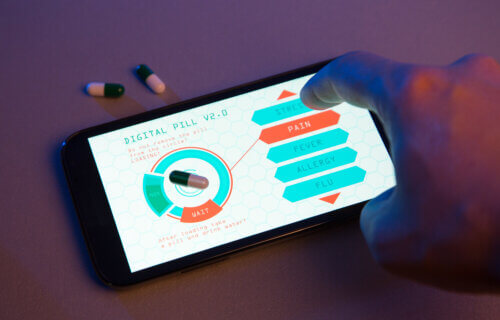
GOTHENBURG, Sweden — Forget to take your medication this morning? Not to worry. Scientists have created a new material that could allow people to take pills which release medication by remote control! Researchers from Chalmers University of Technology say their invention could lead to electronic capsules and drug implants which rely on a signal to tell them when it’s time to distribute more medicine.
The new substance is a polymer surface which changes state using an electrical pulse. This shifts the material from capturing biomolecules to releasing them. Researchers note that a polymer is a chemical compound consisting of long chains of repeated smaller units. Common plastics are a type of polymer.
In this case, the new polymer could help more efficiently deliver biomedicines to patients. Living cells produce biomedicines, which doctors then use to treat anything from cancer to autoimmune diseases. One problem with this process is that these medicines are very expensive to produce. Creating a material that can effectively separate the medicine from other biomolecules could speed up production and help scientists make more of the drugs.
“Our polymer surfaces offer a new way of separating proteins by using electrical signals to control how they are bound to and released from a surface, while not affecting the structure of the protein,” says lead author Gustav Ferrand-Drake del Castillo in a university release.
How do scientists make biomedicines now?
Study authors say the conventional process uses a technique called chromatography, which binds biomolecules tightly to the surface of cells. It takes strong chemicals to release these drugs, which can cut down on the amount of biomedicine this process produces. This is because many medications are highly sensitive to contact with strong chemicals.
Creating a polymer that relies less on chemicals and is reusable would also benefit the environment, according to the team. In fact, they say scientists could use this polymer hundreds of times to separate out biomedicines from living cells.
So, what does this have to do with an electronic pill? Researchers say that same material can also function in biological fluids and withstand the changes in a person’s pH values in their body. This makes it useful in creating a new line of pills which only release their medication after receiving an electronic activation signal. In other words, the electrical pulse would make the capsule change form and release the medication — creating a remote-controlled pill!
“You can imagine a doctor, or a computer program, measuring the need for a new dose of medicine in a patient, and a remote-controlled signal activating the release of the drug from the implant located in the very tissue or organ where it’s needed,” says Ferrand-Drake del Castillo.

Do electronic pills already exist?
Although they may not use an electronic signal, the idea of a time-delayed pill is not new. Currently, there are materials which change their state when the chemical environment around them changes. For example, there are tablets which release medication when the pH balance in a person’s body changes — a common occurrence in the gastrointestinal tract. However, most of the body’s other tissues don’t experience changes in their chemical makeup.
“Being able to control the release and uptake of proteins in the body with minimal surgical interventions and without needle injections is, we believe, a unique and useful property. The development of electronic implants is only one of several conceivable applications that are many years into the future. Research that helps us to link electronics with biology at a molecular level is an important piece of the puzzle in such a direction,” the study author continues.
Another advantage of this new invention is that the material doesn’t need a powerful signal to activate. The reason for this is the polymer itself is extremely thin, allowing users to activate it through small electrochemical signals.
“Electronics in biological environments is often limited by the size of the battery and the moving mechanical parts. Activation at a molecular level reduces both the energy requirement and the need for moving parts,” Ferrand-Drake del Castillo says.
The study is published in the scientific journal Angewandte Chemie.

This sounds like it could also be used in other, more industrial processes.
Take for example a failsafe for spills or leaks of organics like biofuels. Another possibility would be control of wastewater.